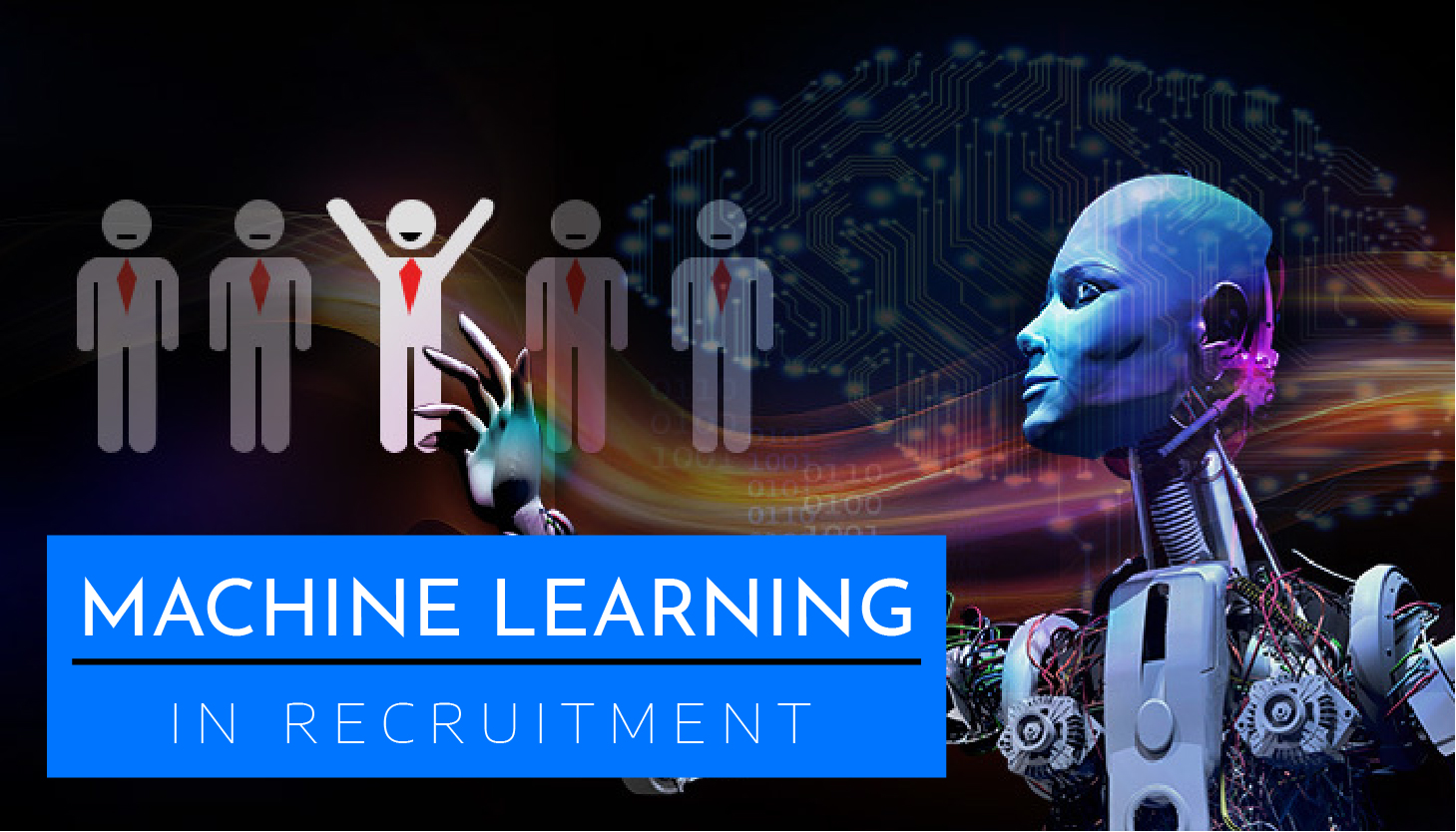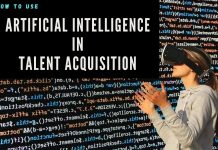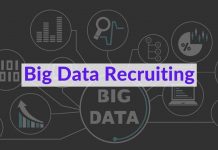Machine learning is the subset of Artificial Intelligence or AI that has become the newest applied technology in most of the industries. With its ability to optimize and automate the hiring process, all sectors are welcoming it with open hands, including the recruitment sector.
In fact, for the recruitment sector, machine learning technology has come out as a miraculous solution. The AI-powered tools and methodologies have made it easier to target the right people and find the best candidates for an opening.
 Additionally, machine learning methodologies can help screen hundreds and thousands of resumes in just a few minutes. Isn’t it amazing!
Additionally, machine learning methodologies can help screen hundreds and thousands of resumes in just a few minutes. Isn’t it amazing!
But is machine learning only lucrative or does it have some negatives too?
In this post, we will dig deeper into the functionalities and mechanics of machine learning in recruitment. If AI has turned bad, we will also share expert tips to let you know how to do it right.
What Exactly is Machine Learning in a Recruiting Context?
As I told earlier, machine learning is a subset of AI or Artificial Intelligence. It focuses on a statistical analysis of information to deliver computer systems the potential, to automate without the requirement of any specific program.
It is a known fact that AI has been around for quite a while now with further evolution in technology and the way our brains work has progressed. Hence, the concept of AI has also transformed to some extent. AI is no more focused on performing complex calculations. Rather, it is highly concentrated on copying human’s decision making processes and performing tasks in more human way.
The devices based on Artificial Intelligence are categorized into basic groups:
- General – Such devices or systems are less common but involve high advancements. Even, it is this particular group of AI that has led to the birth of machine learning.
- Applied – These systems are quite common and designed to automatically trade shares and stocks, or maneuver an autonomous vehicle.
Two vital breakthroughs brought machine learning into various sectors and industries.
- First, rather than training computers for each and everything about the world and how to perform tasks, it is best to automate them to learn for themselves.
- Second, was the advent of the internet that lead to a huge volume of digital information being created, stored, and made available to people.
For such reasons, researchers considered it better to automate computers and machines and let them learn everything for themselves. And the best source of information they can have is the internet that offers them convenient access to all the information around the world.
Development of Neural Networks:
Neural networks are important to teach computers to think and comprehend the world in a way we prefer while retaining the advantages like accuracy, speed, and lack of bias.
This neural network is a system designed using computers to work by differentiating data in a way that the human brain does. Such networks can be used to teach how to recognize, for instance, identify images and classify them as per the elements they contain.
In the recruitment sector, these networks are used to classify applications and categorize the best fits for a job. Machine learning can match applicants to a job, shortlist resumes, and respond in a way that normal audiences would understand.
In a simplified way, machine learning can help with recruitment in the following ways:
- Recruiters just need to identify their problems and can then apply machine learning to get the best solution for it.
- Machine learning can be used to create an evaluation strategy. Hiring managers can for once store the evaluation metrics in their machine learning model. Ultimately, they will be able to track how it is performing and make evaluations based on metrics defined by you.
- Machine learning helps to prepare the data, which you have gathered. It refines, formats, combines and processes the data.
- The automated learning process helps to eliminate mistakes, which can occur because of human intervention.
- You can develop a robust model based on the type of evaluation you want to run.
- Reframe the problem you intend to solve and finely tune the algorithms to achieve better results.
Normal Hiring Process vs. Machine Learning Recruitment:
Shortlisting candidates and screening resumes is a time-intensive and cumbersome task for HR professionals. In fact, most of the leaders find it extremely difficult to screen talents from a big pool of candidates. In comparison to the traditional recruitment process, the machine learning process offers great benefits.
1. Machine Learning Algorithms:
Recruiting through Artificial Intelligence means integrating machine learning algorithms to the process of recruitment. Specific algorithms are outlined to identify and shortlist top candidates in just a few minutes. This way, recruitment managers are provided with shortlisted applicants, which are the best fit for the job.
Recruitment through machine learning has also simplified the process of attracting, sourcing, assessing, and screening candidates using data collected from an extensive range of channels and sources like employee history, social media, information from employers, and more other details. It eradicates financial and time constraints from the hiring and recruitment process. Machine learning hiring has also standardized the recruitment process and has made it easier to assess each applicant.
In short, recruitment through machine learning has made recruitment a lot easier in comparison to the conventional hiring process.
2. Faster Delivery of Results with Standardized Process:
If we consider the traditional recruitment process, we will find that it involves a series of lengthy and convoluted steps, involving lots of people inside and outside the HR department. From finding out the vacancy, searching job portals, to selecting the resumes, and shortlisting candidates, the entire process used to take weeks to complete. It involved even more time and money when a company has to look for top talents and define a pool of candidates with certain specialized skills.
In comparison to this, machine learning can perform all these steps in just a few minutes. Not only this, it even offers a much wider spectrum of candidates to accommodate well the demand for diversity and quality.
3. Elimination of Excessive Expenditures:
Match-IC is an example of machine learning technology, which you can integrate into your existing HR processes. With this technology, you can gain a more effective and efficient recruitment strategy. You just have to spend a moderate amount of monthly fee to AI supplement your entire hiring and recruitment endeavors.
It is because machine learning helps in finding passive as well as active talents faster. As a result, it saves lots of time and effort for the company. If on the other hand, open positions in your company are left unfilled, it can cost thousands of dollars cost to your business in terms of productivity.
At the same time, an increasing challenge among companies is employee retention. AI is an excellent solution to it as it helps to find the candidate, which precisely matches the position, values, and culture of your company.
You can allocate human resources, effort, and time on recruitment to more developmental and lucrative endeavors. This way, AI supports companies to grow and succeed in the novel world.
4. High Level of Precision:
Machine learning recruitment utilizes objective data. Hence, subjective opinions and biases are completely removed from the recruitment process. As a result, judgmental human errors are eliminated to a great extent.
You see, machine learning offers so many benefits over the traditional process of recruiting. Hence, it would not be wrong to say that machine learning is revolutionizing the entire process of recruitment.
Let’s dig into more details to see how machine learning is creating a revolutionary flair in the present recruitment scenario.
How Machine Learning Is Revolutionizing Recruiting?
The biggest challenge for recruiters presently is that all of them have massive networks. But they don’t have an efficient way to leverage those connections without utilizing a huge amount of resources and time.
For instance, if there are 5,000 LinkedIn connections to consider, what you will do?
This brings machine learning into play.
1. Machine Learning Helps to Fetch a Candidate’s Information:
Using machine learning, recruiters can easily recognize precise data points of a candidate’s profile like contact details, work history, and more. They are able to match the same with relevant opportunities.
Candidates are not selected automatically by machine learning. Rather, it narrows the search field and enables them to focus on assessing the intangibles. This way, a stronger hire can be made, resulting in greater returns on investment.
2. Compressing the Hiring Gap:
A major burden on organizational productivity is unfilled job positions. Recruiters are using machine learning in order to apply the right recruitment resource to fill a specific job opening.
With so many different sources of information available, recruiters set reasonable expectations for clients and use these sources to allocate relevant resources to difficult to fill, job positions. Whenever there is a new job position, such features are gathered right away and then use relevant resources to get the job position filled.
Accuracy is also of extreme importance. Using machine learning algorithms, it is possible to source and recruits professionals ensuring they deliver the right candidates.
3. Reverse-Engineering:
Many hiring managers and recruiters are using machine learning for the reverse-engineer candidate process and to assess the performance of a potential candidate in a specific role.
The best solution is solving a problem so that you can leverage the technology to find the most suitable candidate for the employer. Using machine learning, each organization can create customized algorithms to care for the unique needs of the companies while taking into consideration their varied preferences.
Surely, a star employee in one company may not be the perfect fit for another one. So, machine learning is helping recruiters to look for specific traits, skills, and expertise, which the company needs.
4. Reviewing Resumes As Well As Social Behaviors:
Resumes alone cannot tell everything about potential hires. Machine learning algorithms can incorporate the information of resume about which applicants really are, including their likes, dislikes, and values. Machine learning can be used to plug that detail into an algorithm, which could assess how well the applicants can fit your corporate culture.
They do this by first analyzing behavioral data from blogs, social networks, and other digital platforms. This offers additional information along with standard details like experience, education, and other objectives.
Also, machine learning helps to better understand the hiring patterns and preferences of each hiring company. With all such data and information, it becomes easier to conduct tailored search and identify results that are unique to the position and company.
5. Balances Recruiters Risk:
Machine learning also helps to determine how and when recruiters and sources require help with their workloads. This is done by considering the disproportionate share of high to medium risk requisitions, which may be additional resources or time to fill.
6. Conducts Intuitive Search:
Another major challenge, which recruiters experience, is using the correct terminology to surface the right candidates who precisely match what you are looking for. Artificial Intelligence is of great help here.
Machine learning recruitment conducts a search based on data of relevance that brings conceptual search, implicit search, and semantic search into the role. With the help of semantic search, it is possible to comprehend the searcher’s intent. Conceptual search helps to conduct search around a few keywords and implicit search delivers results based on information already gathered or assumed.
7. Extensive Search Process:
The major challenge of Traditional search is that it is unable to search for all possible candidates. This generates a problem, which many recruiters don’t want to own up to.
If you surely want to find the best candidate, you must not exclude such people from searches. Doing so may deprive you off hiring the best-fit candidate.
Machine learning can help to find candidates who were missed by conventional sourcing, recruiting and screening methodologies.
Based on all these aspects, it can be stated that machine learning is an excellent tool for recruitment. It can help to fill all gaps in the recruitment process and let recruiters focus on the human element of the recruitment process. The best part is that machine learning recruiting tool is evolving at an incredible rate and can speed up the recruiting process, delivering more relevant results.
How Machine Learning Can Improve Recruiting?
Machines are great to make processes more efficient. Machine learning recruiting can bring value by faster processing of job applications as compared to humans. This reduces the amount of time and money involved in the overall recruitment process.
Based on such aspects, here are few ways on what machine learning can do to improve recruiting in the following ways:
1. Recommendations Made Easier:
Many hiring managers use different recruitment platforms to search for potential employees and narrow down their list of suitable candidates. They shortlist candidates on the basis of factors like location, experience, industry, and skill.
Using machine learning capability, recruiters don’t have to feed in every detail manually and dig from hundreds of applications. They can depend solely on job portals and networking sites to leverage machine learning and offer recommendations on candidates who best fit the role.
As a result, a more efficient process of hiring is achievable.
2. Bias Elimination:
Another way machine learning can help to improve recruiting is that it offers equal exposure to all opportunities, no matter what is the background of the candidate. Its algorithms focus only on skill-based data and not on candidate’s university or previous companies they have worked, or gender or ethnicity.
Moreover, candidates are not aware of their value and the compensation they must take. Machine learning is of great help even in this context. It exposes salary details for a particular role and geography, thereby better informing the candidates.
From employer’s perspective, it can source as well as analyze salary data. This way, companies get a clear picture of the appropriate salary offer based on the experience and skills of the candidate.
3. Leverages Data:
Mostly, humans suffer from unconscious data. Machine learning helps humans to overcome such biases with data by creating more awareness around the preferences of recruiters and hiring managers. It better informs employers and ensures that they don’t miss out on diverse candidates.
Machine learning algorithms quantify outcomes for their companies that lead to better human behavior. Companies relying on machine learning experience a major challenge of developing a platform that is free of wage gaps and biased hiring. Hence, it is of utmost importance to define correct algorithms in order to use machine learning at its best.
4. Job Advertising:
Manually writing and showcasing job adverts is a time-intensive process. Despite performing them efficiently, these measures fail to offer optimal results.
In this scenario, machine learning can be used to analyze language patterns within job adverts. They are useful to phrase the job advert in order to attract more candidates.
5. Screening of CVs:
Manually screening CVs is again a time-consuming process for HR departments. As a solution to this problem, many AI-powered screening tools are designed. Such tools screen CVs and identify keywords, which match the traits, skills, and experience for the job.
Automatically, they screen and shortlist candidates.
6. Pre-selection and Assessment of Candidates:
With the help of pre-assessment tools, it is easier to identify top candidates. Such tools are available in varying sizes and shapes, and machine learning tools help in quality hires.
These tools measure the ability, aptitude, soft skills, and culture fit of the candidates.
7. Improved Candidate Relationship Management:
AI tools and solutions can help to improve candidate relationships. It is an excellent way to manage and improve relationships with existing and future job candidates.
A good example of this is AI-integrated chatbots that can send timely messages to candidates and keep them informed and engaged during the entire process of recruiting. Also, they are useful to answer candidate queries.
8. Predicts Hiring Requirements:
Succession planning is of prime importance for candidates. Companies are using machine learning infused platforms that hold information about any candidate. Also, it lets you estimate the cost and time to hire new employees.
The Impact of AI and ML on recruitment:
The process of recruitment is an intricate one involving numerous steps. Recruiters are consistently finding it difficult to dig the right candidate from hundreds and thousands of resumes they receive.
Success is achievable only when they are able to source high-quality candidates, map the best fit to organizational requirements, schedule interviews with shortlisted candidates, conduct interview process with transparency, and ultimately on-boarding them with appropriate resources and training.
Some of the major recruitment areas, where ML and AI have already started to create an impact are as follows:
1. Sourcing and Mapping Talent:
Recruiters have to undergo extremely tedious job of sourcing through resumes to identify the right candidates. With AI integrated tools, organizations can get rid of the manual process. They offer virtual assistance to get the job done more efficiently.
Virtual assistants can integrate with the client’s application tracking system on the basis of past hiring decisions. This way, assistants offer the best fit candidate for the job.
2. Initial Screening and Scheduling Made Easier with Chatbot:
The task of the initial round of questionnaires can be automated using AI-based chatbots. These chatbots speed up the process of screening as they can talk to candidates and gather relevant details. At the same time, they can help schedule interviews. For this reason, brands like Uber and Microsoft have already started using chatbots.
3. Enhanced Experience for Candidates and Employees:
Another major challenge among human resource managers is high attrition rate. Artificial intelligence can improve the entire employee and candidate experience using predictive analysis.
It helps companies to predict the probability of a candidate fitting into the company’s work culture.








































